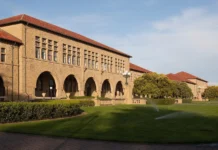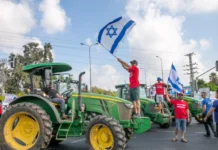First, the bad news. Shockingly, we have all been hearing and reading about vicious anti-Semitic attacks in Europe: shootings, stabbings, political leaders rabble-rousing crowds to rise up against Jewish communities and to blame them for society’s ills. This has led to a large uptick in the decision by many European Jews to make aliyah and relocate to Israel. Here at home, we’re hearing more about anti-Semitism on college campuses — anti-Jewish rhetoric that is cloaked in the venomous language of “anti-Zionism,” a convenient way for Students for Justice in Palestine and similar social justice warriors to smear the Jewish people and the Jewish homeland.
Now, some good news. What we don’t often hear about are the vibrant Jewish communities south of our border. Having spent much of my career in Latin America, I have had the wonderful opportunity to visit, worship and participate in activities with many of these communities in their synagogues, their day schools, their community centers and among their citizens. I am happy to report that Jewish life, from Mexico southward, is active, meaningful and much larger than many Americans believe. In fact, hundreds of thousands of Jews live in Latin America, with communities in Argentina, Brazil and Mexico, home to the largest among them.
This misunderstanding runs in both directions. During a Shabbat service at the Orthodox Beit Yaakov Congregation in Sao Paulo, Brazil, my Brazilian friend introduced me as her “sister from the United States.” One of her local friends asked if I was from New York. When I responded that I wasn’t, rather that I was from Washington, D.C., she asked with sincere surprise, “There are Jews in Washington, D.C.?” The following Shabbat I was sitting in my Conservative congregation in Rockville and told my friend that I spent the previous Shabbat in shul in Sao Paulo. He was somewhat surprised and asked, “There are Jews in Brazil?”
I make a point of visiting synagogues everywhere I travel, and strongly encourage other Jews to do the same. This exploration is in part out of curiosity, but started mostly because I spent a year saying Kaddish every day for my father, of blessed memory. I have continued visiting these holy places as part of my regular travels in the region. In each city, including Sao Paulo, Rio de Janeiro, Buenos Aires, Bogota, Montevideo, Uruguay, Santiago, Chile, Mexico City, Managua, Nicaragua, San Jose, Costa Rica, and Panama City, Panama, I made sure to check out the Jewish presence in each. We in the United States need to remember that Jewish roots in Latin America often date back to the 1600s. In every city, I was welcomed by local co-religionists, invited to daven and even received an aliyah to the bima to recite El Maleh Rahamim in Mexico City to note the end of the first 30 days of mourning for my father.
Although each country is nominally Catholic, many other faiths are recognized, including large communities of evangelical Christians, Mormons and Jews. In spite of their small numbers, Jews in Latin America are among the leaders of their countries. In most countries, kosher food and locally butchered kosher meat is available. In Argentina Jews serve in the Parliament. In Panama, Jews have built up much of the infrastructure around the nation’s airport and banking industry. In Brazil, hundreds of young people travel to Israel each year as part of the Taglit/Birthright Israel program. Hundreds more participate, along with older generations, in the March of the Living in Eastern Europe.
Jews are vibrant members of the communities in which they reside. Last month, I was in Montevideo during Yom HaShoah and was invited to a community-wide memorial service held in the Comunidad Israelita, the local Jewish Community Center. To my surprise, there were thousands of people crowded into the sanctuary for a beautiful and meaningful commemoration ceremony that included the following unforgettable scene: Seven Holocaust survivors were invited to light memorial candles, one of whom was a Sephardic woman from Macedonia who fled through Albania and was protected there by Muslims during the war.
Her daughter, Dinah Spitalnik, has written her mother’s history in Spanish and is in the process of editing a version in English. The book, roughly translated as “Escape from the Balkans: The Valiant Saga of the Konforti Family During the Holocaust,” tells the story of her mother’s journey from Macedonia through Albania to Italy, to Brazil, and ultimately to Uruguay. Those of us with relatives who survived the Shoah can certainly appreciate this family’s determination to survive and to thrive against all odds.
I was also struck by the sheer number of teenagers present at the event. There were literally hundreds of teenaged youth group members, all decked out in their varying youth group t-shirts, showing their ties to their friends but also to their community. I imagined similar Shoah commemorations in the United States, and I teared up knowing that young people here share this unique bond with young people thousands of miles and a different language away. The respect, the learning, and the love shown by these young people is evidence that our people’s story and legacy will continue, from one generation to the next.
The next time someone at shul says to you, “Really? I didn’t know that Jews live there,” be sure to note that Jews live and thrive in places you might never have considered. And while our hearts break over stories of anti-Semitism in parts of Europe, we in the United States can find comfort in knowing that Jews from around the world as well as in Israel are able to thrive, to lead their communities, and to raise engaged and involved Zionist children and teenagers.
Bonnie Glick is a nonprofit executive and veteran American diplomat and businesswoman. She lives in Bethesda.
























